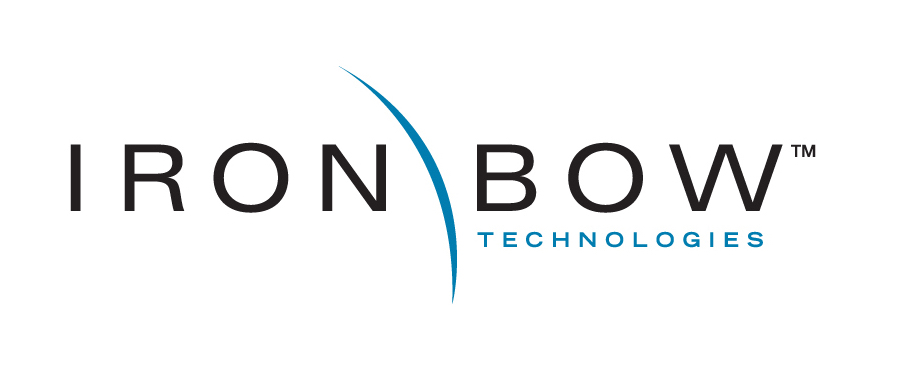sponsor content What's this?
With a Growing Remote Workforce, Public Sector Cloud Adoption Is More Important than Ever

FluxFactory/iStock
Presented by
Iron Bow Technologies

Over the last few months, employees and agencies alike have been put to the test as the spread of COVID-19 has required more workers to do their jobs remotely. But the concept of teleworking isn’t new: Businesses and agencies have been leveraging remote workforce solutions such as VDI, collaboration tools and videoconferencing technologies long before social distancing took effect.
However, the spread of COVID-19 has spurred a sense of urgency around remote work that’s required a sudden shift to organizational tools and workflows. This is especially true for government employees and contractors, which exchange sensitive information on a daily basis and must ensure they are meeting necessary security and compliance standards. Organizational leadership, meanwhile, must shift their focus to preventing cybersecurity threats — all while managing workers who are using their own devices in different locations.
These roadblocks have given agencies the push they need to develop secure and scalable cloud solutions that support flexible working environments — not only for today’s environment, but to also support the workforce in the future. That’s according to experts on Iron Bow’s recent webcast, “On Target: How to Successfully Implement a Cloud Smart Strategy.” Representatives from both the public and private sector offered up recommendations to help government leaders implement effective, sustainable cloud strategies.
Accelerating Agencywide Cloud Migration Efforts
While many cloud adoption efforts were well underway before the challenges of COVID-19, the health crisis has refocused priorities toward improving tech capabilities.
Brian Merrick, one of the panelists at Iron Bow’s webcast and the director of cloud programs for the Department of State, has seen this recommitment to cloud adoption firsthand.
“We’re trying to leverage the immediacy of this crisis to put a bigger focus on data integration and hybrid data integration so we can move forward with additional analytics and workflow initiatives to support the response,” he said.
According to Merrick, creating and executing a cloud adoption strategy today will better prepare agencies to solve challenges in the future. That starts with smart budgeting and understanding costs associated with change management.
“In addition to understanding data, it’s important to budget enough money to achieve desired outcomes,” he said. “Use monitoring tools to keep track of spending and optimize usage to reduce costs.”
Merrick also pointed out that agencies need to be mindful of short-term and long-term costs when weighing different cloud migration options.
“If you move to a [Software as a Service] model, for instance, you save some funding on consumptions costs upfront, but by adopting a new tool your long-term change management costs may be higher, not to mention a bar to adoption you may need to overcome,” he said.
Each agency has a different maturity level and a unique set of business goals, so there’s no one-size-fits-all approach to cloud adoption. Partnering with the private sector and communicating with stakeholders about specific concerns can help leaders make smart, cloud-related decisions that will prepare them for future success.
Understanding the Transition from Cloud First to Cloud Smart
The good news? Public sector organizations already have access to tools and resources to help them create a clear path toward cloud adoption.
In 2019, the Office of Management and Budget released an update to the legacy Federal Cloud Computing Strategy. Where the former policy, known as “Cloud First,” gave agencies broad authority to adopt cloud solutions, the updated version, “Cloud Smart,” offers more specific and practical implementation guidelines.
The Cloud Smart strategy is founded on three key pillars: workforce, procurement and security. At a time when employees are logged into a number of different devices with various levels of connectivity, agencies need to be proactive about assessing risk.
Calvert Smith, the cloud adoption lead at GSA’s Centers of Excellence, emphasized during the webcast that security and risk assessment needs to be part of an agency’s cloud adoption strategy from the beginning. To ensure that happens, communication is key.
“We’re working with agencies to design DevSecOps best practices into their development pipelines,” he said. “When development, security, and operations teams communicate early and often, they can get to production quickly and securely.”
Perfecting Your People Strategy
While systems and processes are critical to a successful cloud migration, perhaps the most valuable resource agencies can leverage is their people. To drive any cloud adoption strategy forward, they’ll need to identify and engage stakeholders across the organization.
That effort starts at the top: Agencies need expert C-level talent, such as CTOs, CIOs and chief data officers, to lead these initiatives. These professionals are primarily responsible for managing data at the enterprise level, but according to Intel Chief Data Scientist Melvin Greer, they must also understand how that data impacts the entire agency.
“If you understand how data works, you can really understand how an entire agency works,” he said.
Chief talent officers or chief people officers are also critical to cloud adoption because they are responsible for attracting and retaining top tech talent. They’re often tasked with identifying future tech leaders across an organization and helping staff learn new skills to help them make informed technical decisions.
In addition to engaging C-level executives in cloud adoption strategy conversations, Merrick added that it’s also important to communicate decisions to program managers, who are on the front lines when it comes to executing these initiatives.
“Empower a network of internal stakeholders and hold them accountable by making sure they have a direct stake in success,” he said. Taking these steps will drive engagement across the organization, and, in turn, contribute to a fast and effective cloud adoption process.
Tapping a Testing Ground for Health Innovation
With health innovation more top-of-mind than ever, cloud can help pave a way forward for government agencies to better serve citizens. And today, agencies have an opportunity — and perhaps a responsibility — to leverage that data to improve the health and wellness of citizens.
For example, thanks in part to cloud-enabled technologies, industry and government leaders are teaming up to ensure all Americans can use any device to access telehealth services.
“It’s a marriage and an integration of a lot of different technologies, whether that’s VDI or bring your own device,” Iron Bow CTO Jim Smid said. “Having the security and having the video capabilities, some of which are in the cloud, are critical to navigating the health challenges we’re dealing with today.”
There has been an “all hands on deck” approach across agencies and partners to mitigate the spread of COVID-19 through the cloud. Greer and his team, for example, have developed a data lake inside a hybrid and multicloud environment that enables researchers and scientists to access datasets that can help them develop COVID-19 testing techniques and vaccines.
As agencies look to leverage the cloud to solve these challenges, Smith says it may be worth taking a page from industry partners and other vendors across the federal government.
“Don’t recreate the wheel,” he advised government leaders. “There are many people facing similar challenges in the federal government, and they’ve already found ways to overcome them. Learn from those lessons and participate in communities of practice so you can give your agency the best opportunities for success.”
Learn more about how Iron Bow can help your agency implement a holistic cloud adoption strategy here.
This content is made possible by our sponsor, Iron Bow Technologies. The editorial staff was not involved in its preparation.
NEXT STORY: The 6-Step Approach to an AI-Optimized Agency


